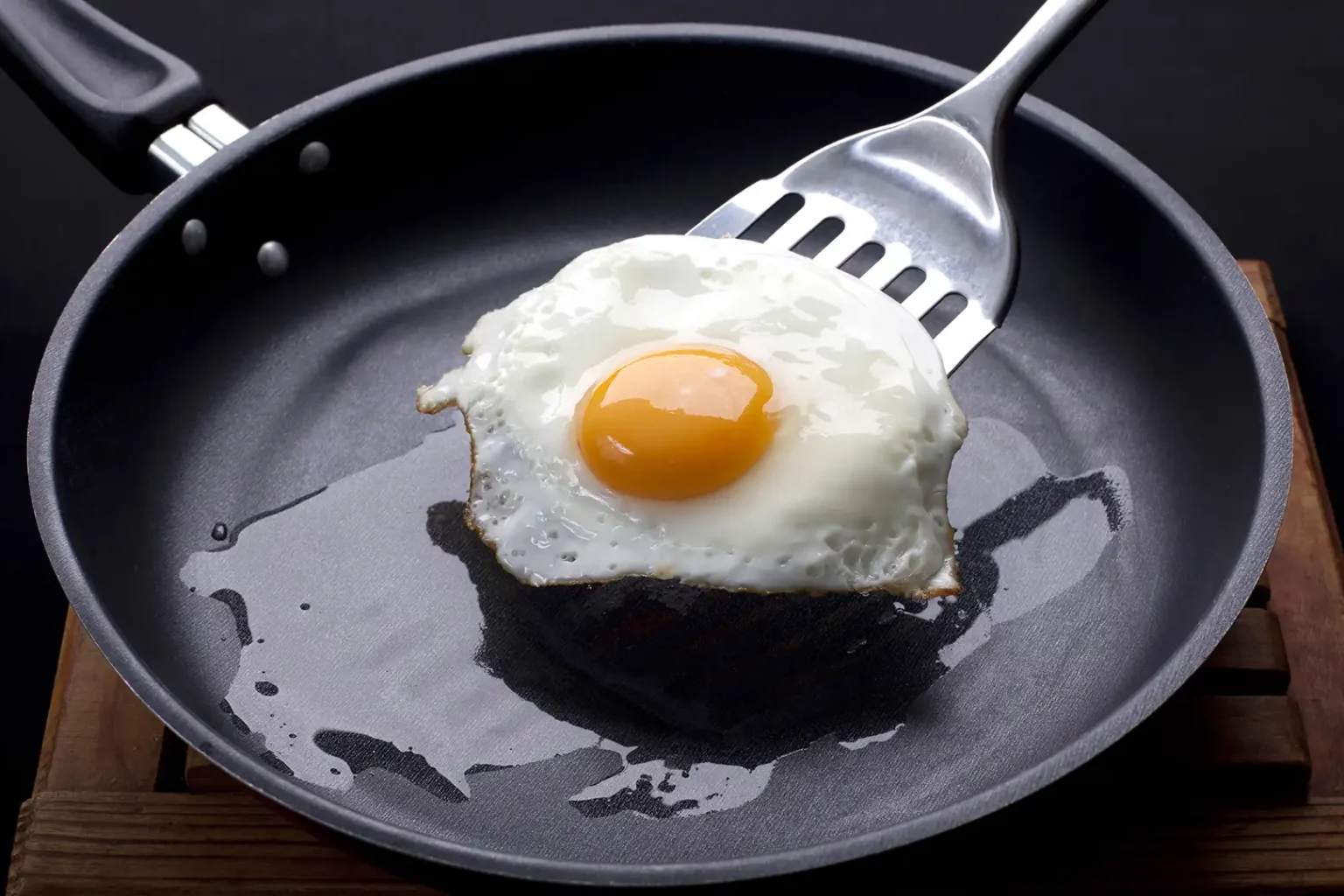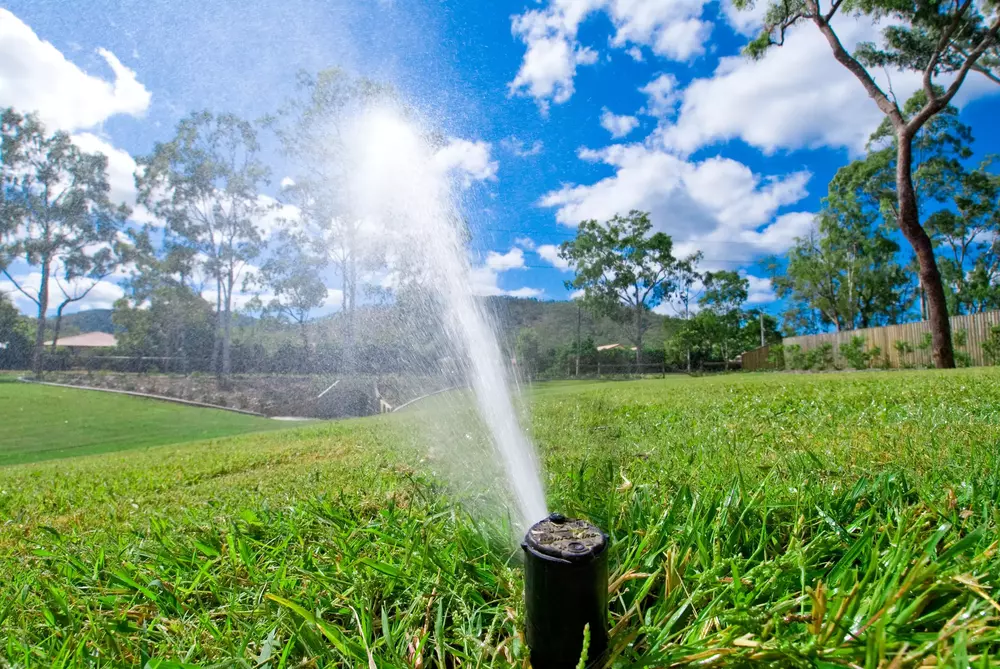Cooking eggs on stainless steel pans is an effortless way to make a nutritious breakfast or dinner, but if you’re new to working with this cookware, it can be difficult. Not only are stainless steel pans renowned for their strength and adaptability, but they may also stick if not handled correctly. In this article we’ll provide insight into cooking eggs on a stainless steel pan including preventing the egg from sticking and selecting the ideal oil or fat needed for frying them up!
How to Properly Cook Eggs in a Stainless Steel Pan
To prevent your eggs from becoming attached to a stainless steel pan, it’s important that the heat of the stovetop is adequate and controlled. Heat up your pan at medium-high for two or three minutes before you add in egg yolks and whites. Doing so will assure even cooking throughout, together with no sticking whatsoever!
Once the pan is heated, add a bit of oil or fat to it. Common alternatives for preparing eggs include butter, vegetable oil, olive oil and bacon grease. Select an option with higher smoke point as this will prevent burning and maintain flavor of your dish.
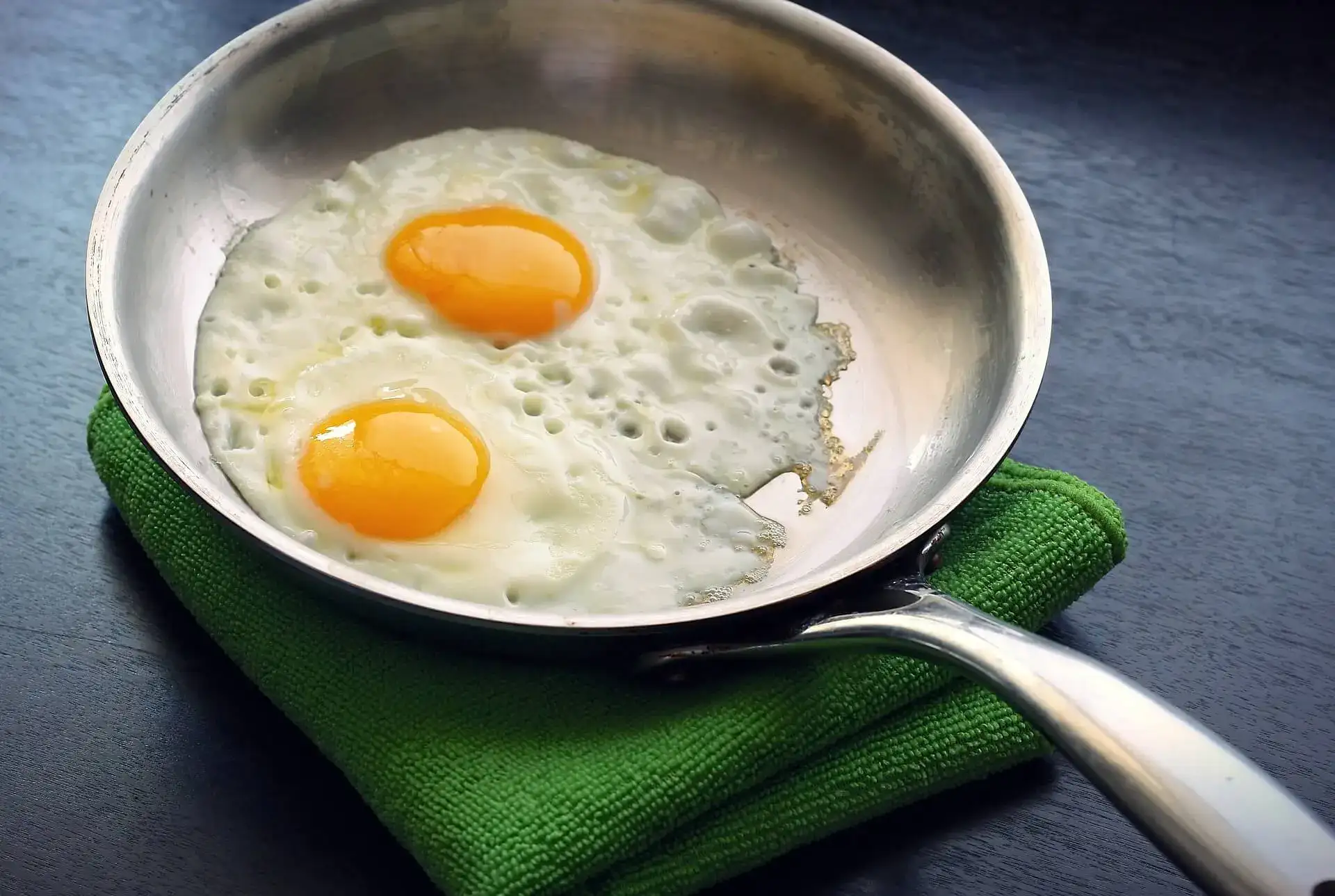
How to Stop Eggs from Sticking to Stainless Steel Pans?
Coat the Pan with Cooking Spray
To avoid having eggs stick to stainless steel pans, there are several strategies you can use. Pre-coating the pan with a nonstick spray like cooking oil is an optimal way of creating a protective layer between the egg and the surface of your skillet, making it much easier to remove once cooked!
Preheat Your Pan & Add Some Water
To prevent your eggs from sticking to the pan, try adding a splash of water – just enough to generate steam and elevate the eggs off its surface. Monitoring how much liquid you add is essential; if there’s too much water present, it will cause them to become overcooked and soggy.
3 Types of Fried Eggs on Stainless Steel Pans with Pictures
Fried eggs make up a timeless breakfast meal, and can be prepared in several unique ways – check out these five examples complete with visuals to help you imagine their ideal outcome!
1. Sunny-side up eggs
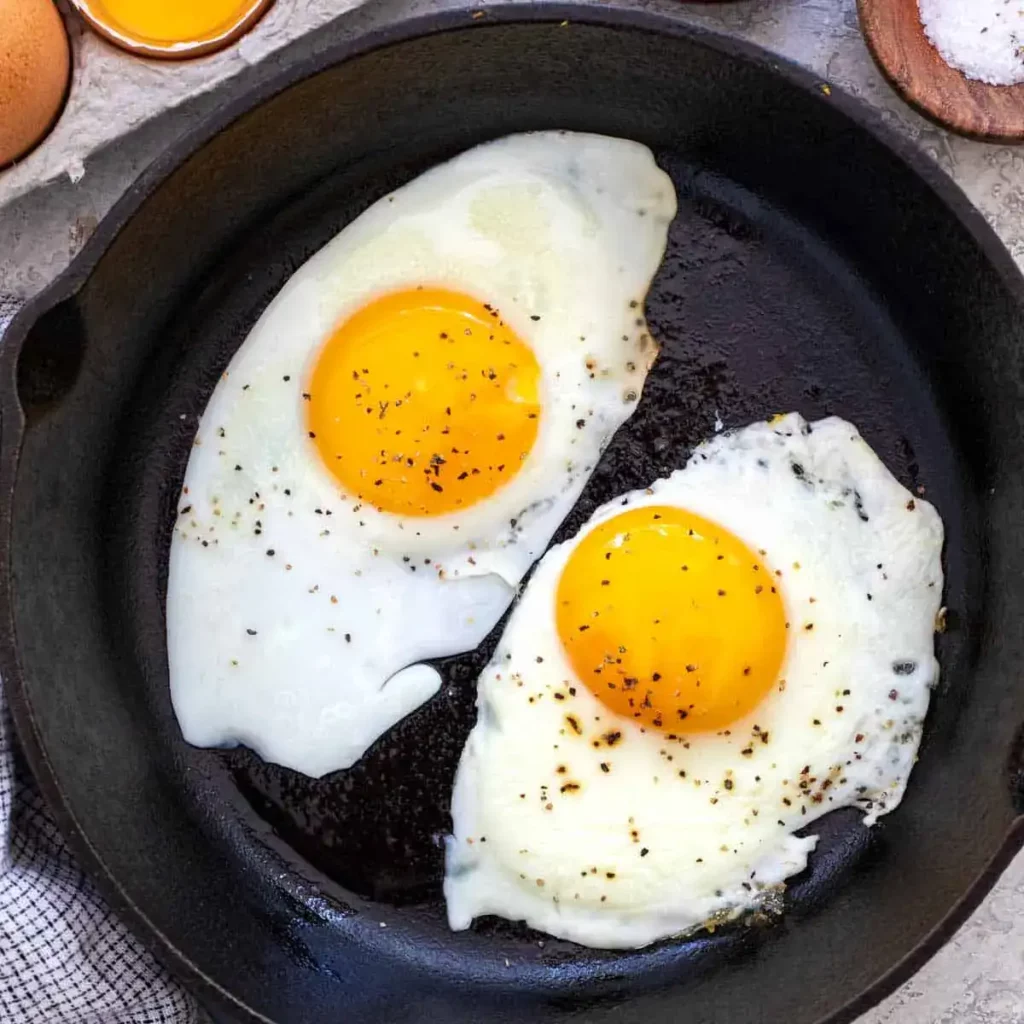
Get your morning start right with the comforting and delicious sunny-side up eggs! All you’ll need is a pan, oil or butter, and two to three minutes of time. Firstly warm your pan on medium-high heat before adding in either some oil or butter. Crack each egg into the heated skillet separately so that they do not stick together. Then, let them cook for roughly 2-3 minutes until their whites are done but leave their yolks runny for a tasty treat.
2. Over-easy eggs
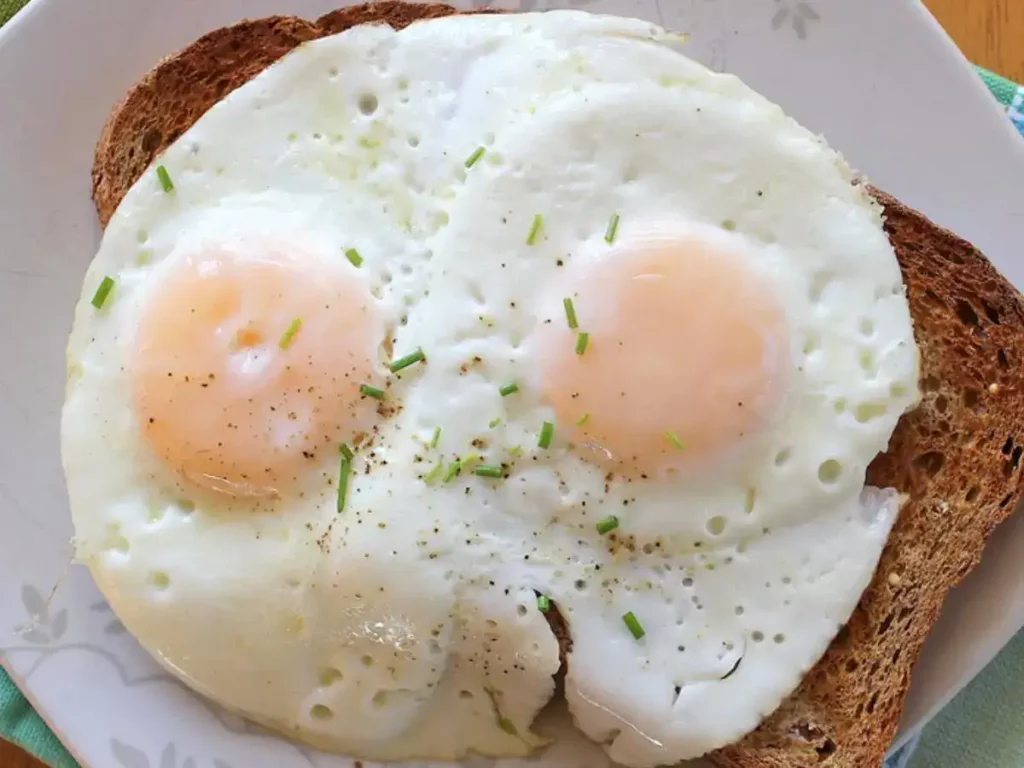
Over-easy eggs are quite similar to sunny-side up eggs. The only difference is that they are flipped and cooked on the other side for a brief period of time. This helps to set the yolk and make it slightly firmer. To cook over-easy eggs, heat a pan over medium-high heat and add a small amount of oil or butter. Crack the eggs into the pan and cook for about 2-3 minutes, or until the whites are set. Then, carefully flip the eggs and cook for an additional 30 seconds to 1 minute, or until the yolks are set to your liking.
3. Over-medium eggs
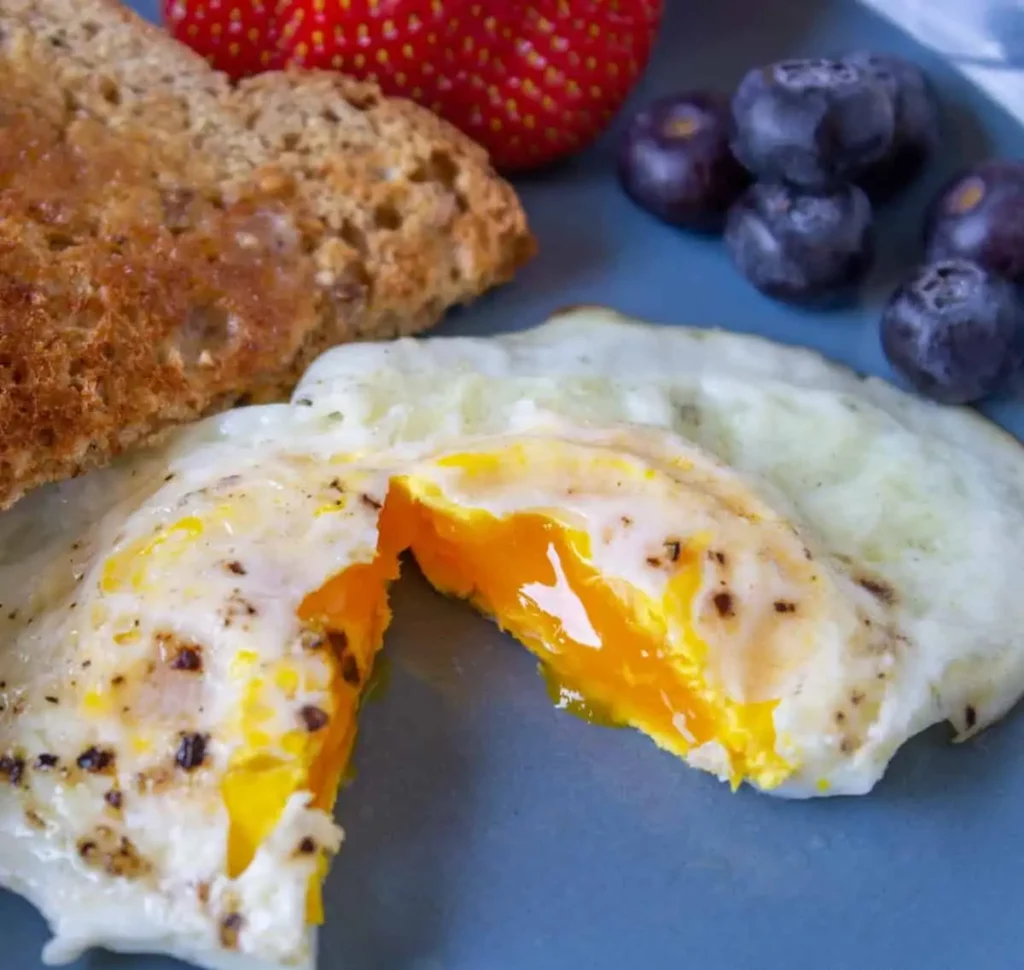
If you’re in search of the perfect over-medium eggs, all it takes is a hot pan and some butter or oil. Begin by heating your skillet to medium-high heat before cracking two eggs into the center. Let them cook for 2 to 3 minutes until they are set, then carefully flip each egg over and let them finish cooking on the other side for an equal amount of time. After that short process, you’ll be left with delicious yolks that are just slightly runny!
4. Over-hard eggs
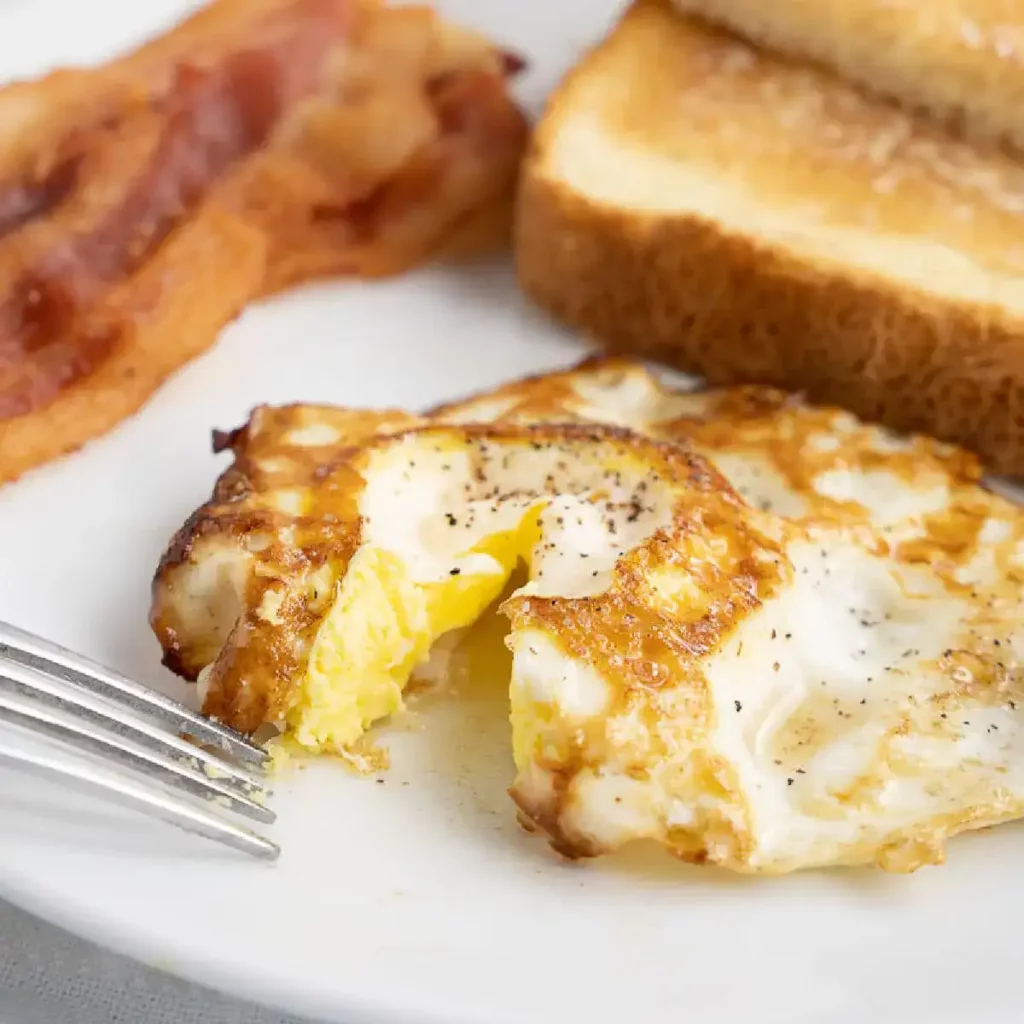
If you’re looking for an over-hard egg, simply heat up a pan on medium-high and add some oil or butter. Crack the eggs into the pan, cooking them for around 2 to 3 minutes until their whites are solidified. Flip each egg carefully using your spatula before continuing to cook both sides evenly. About 4 to 5 more minutes should give you yolks that are completely firm!
5. Scrambled eggs
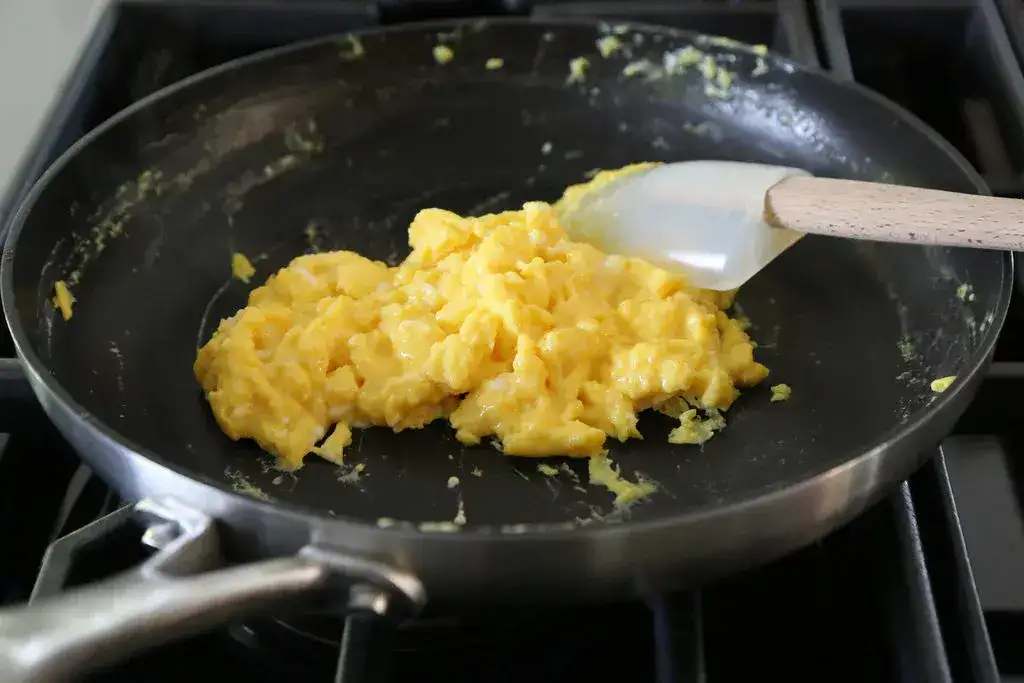
Wake up to a delicious start with the classic breakfast of scrambled eggs! Cooked on a stainless steel pan, they are easy and quick. Heat your pan over medium-high heat, and add just a bit of oil or butter. Crack open some eggs into bowl and beat them until fully combined before pouring onto the hot surface below. Constant stirring is key as you use your spatula to scrape up the eggs from the bottom. This will take about 5-7 minutes until all egg pieces are ready leaving no runny consistency behind. Your steaming plate of scrambled eggs awaits for an energizing morning meal!
Best Oils to Fry Eggs On Stainless Steel Pan
When frying eggs, the oil or fat you choose can have a profound effect on flavor and texture. To bring out the best in your scrambled eggs, try one of these terrific oils:
- Butter: When you fry eggs, butter is the way to go if you want a classic and delicious meal. For optimal results, be sure to use superior quality butter as this will ensure that it won’t burn and spoil your dish.
- Olive oil: Cooking eggs with olive oil is a savory way to incorporate healthy fats into your diet. Just make sure you choose an extra-virgin, high-quality olive oil as it has the highest smoke point and won’t overpower the flavor of your meal.
- Vegetable oil: Vegetable oil is the perfect go-to option for frying eggs, as it boasts a myriad of benefits to make your culinary experience effortless. Not only does it have an incredibly high smoke point, but its delicate flavor and low cost makes cooking with vegetable oil ideal for everyday meals!
- Bacon grease: Fry up your eggs with the unique and tantalizing taste of bacon grease, yet take care to not overindulge as it is abundant in saturated fats.
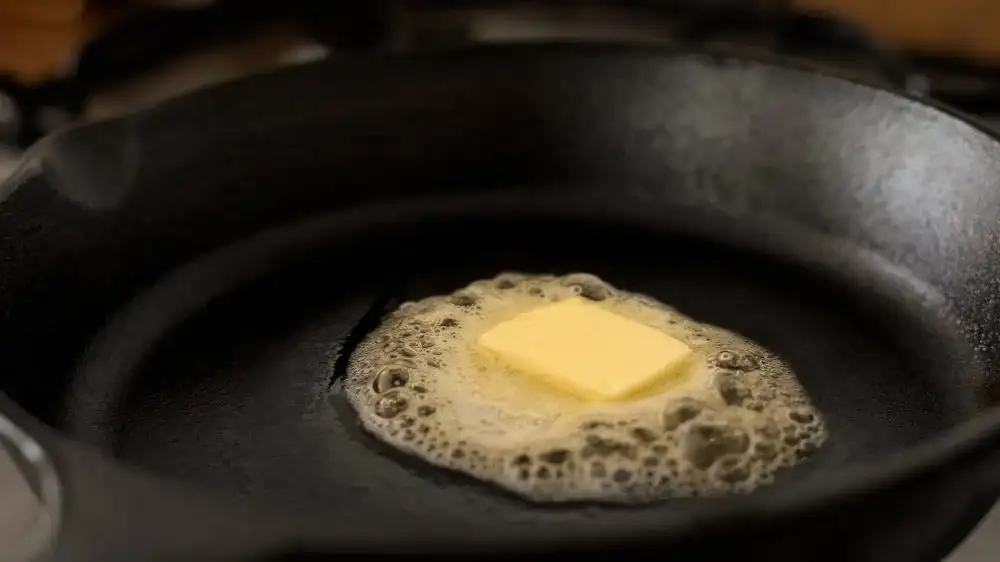
Conclusion
Making the perfect eggs on a stainless steel pan can be quite daunting, especially for newbies. But don’t worry! By simply following the tips and tricks laid out in this article, you will quickly learn how to cook your favorite type of eggs with ease – no matter if it’s sunny side up or omelette. With a bit of practice and knowledge of which oil works best to prevent sticking, you’ll soon be able to fry any kind of egg deliciously without struggling at all.


